This authentic Thai peanut sauce recipe with coconut milk is creamy, sweet, and full of nutty flavors. Nam jim satay is easy to make, and you can serve it as a dipping sauce, as a salad dressing, for peanut noodles, or simply drizzle it over some steamed jasmine rice.
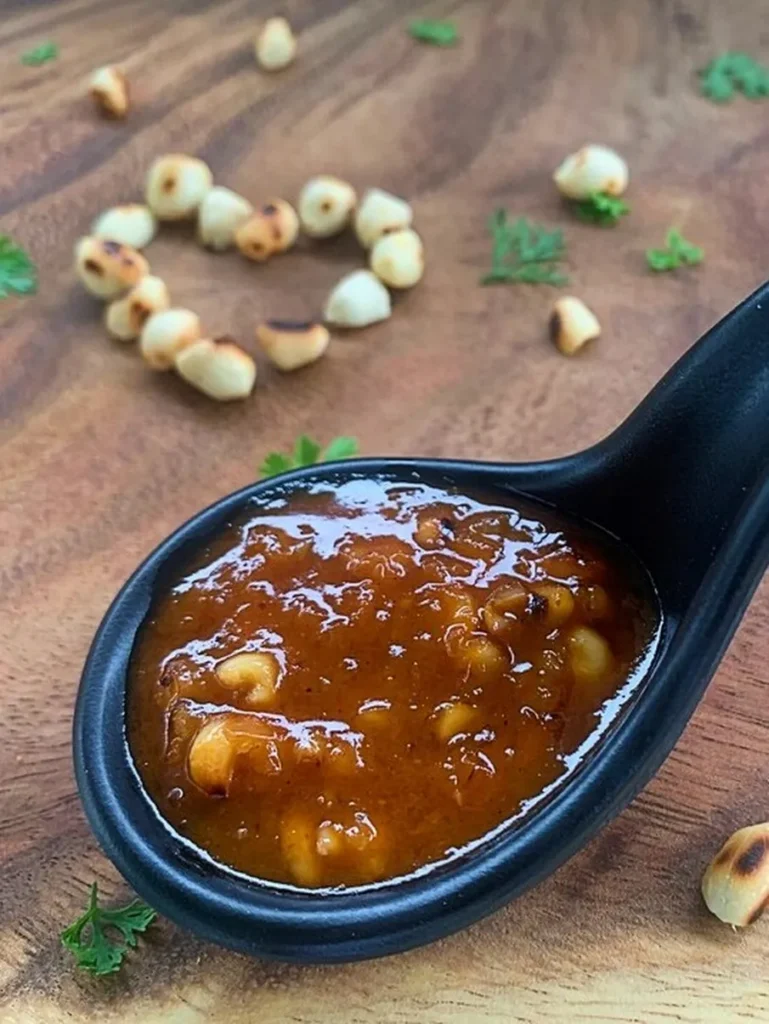
Use this Thai peanut satay sauce as a dip for Thai chicken satay, shrimp satay, and Thai shrimp rolls. For those who like a spicy version, feel free to try my Thai spicy peanut sauce too.
What is Thai peanut sauce
Thai peanut sauce, or nam jim satay, is a rich, creamy dipping sauce made from peanuts, coconut milk, and Thai spices. It has a sweet and nutty flavor and is often served with satay.
Nam jim satay (น้ำจิ้มสะเต๊ะ)
The Thai name for this condiment is nam jim satay or nam jim sate. Nam jim means dipping sauce, and satay is just satay as we know it.
It’s a peanut dipping sauce traditionally served with chicken satay, but my grandmother’s version is so delicious, you’ll want to put it on everything!
Authentic Thai peanut sauce
This authentic Thai peanut sauce recipe is my grandmother’s, a kind of secret family recipe. But… I just can’t keep it to myself.
It’s a dipping sauce that’s suited for vegans and fits any occasion. You can serve it with fresh vegetables, Thai shrimp lettuce wraps, or any kind of grilled meat. Whenever I make this, I make a big batch because it keeps for several days in the fridge – perfect for meal prepping.
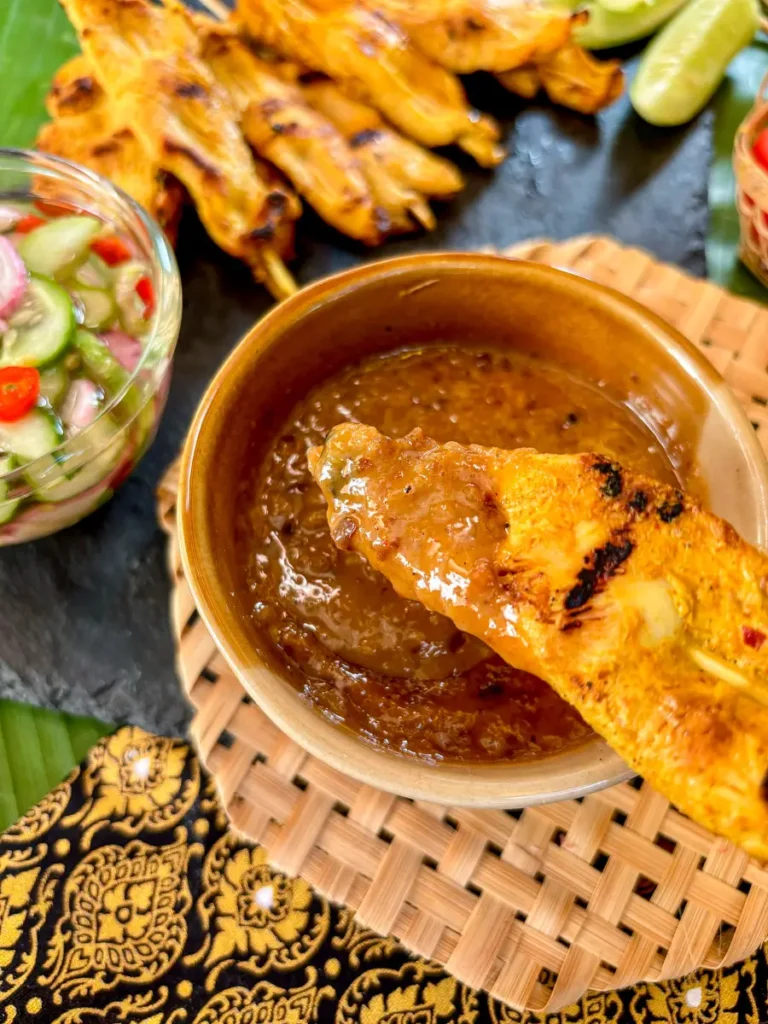
A key ingredient in an authentic peanut sauce is curry paste. My grandmother uses massaman curry paste, it brings a hint of spice and complex flavors that you can’t replicate with other curry pastes.
And in Thailand, we don’t use peanut butter for making nam jim satay, instead we use real peanuts. We also don’t use any vinegar or butter.
This is different from many Westernized versions. Growing up in Belgium, I tried lots of Thai food in local Thai restaurants. I’ve tasted many variations of peanut sauce – some were too salty, others too spicy, and I’ve had a few that were overly sour.
This Thai satay sauce has a creamy texture, with bits of peanuts for a crunchy bite. Every ingredient is authentic, so you’re getting a taste of genuine Thai cuisine here.
With this recipe, you can easily make an authentic Thai dipping sauce for satay that tastes just right. Many thanks to my grandmother for allowing me to share our well-kept family recipe!
Ingredients
Ingredients can be sourced at Asian grocery stores and Asian markets.
The exact measurements are in the recipe card at the end of this post.
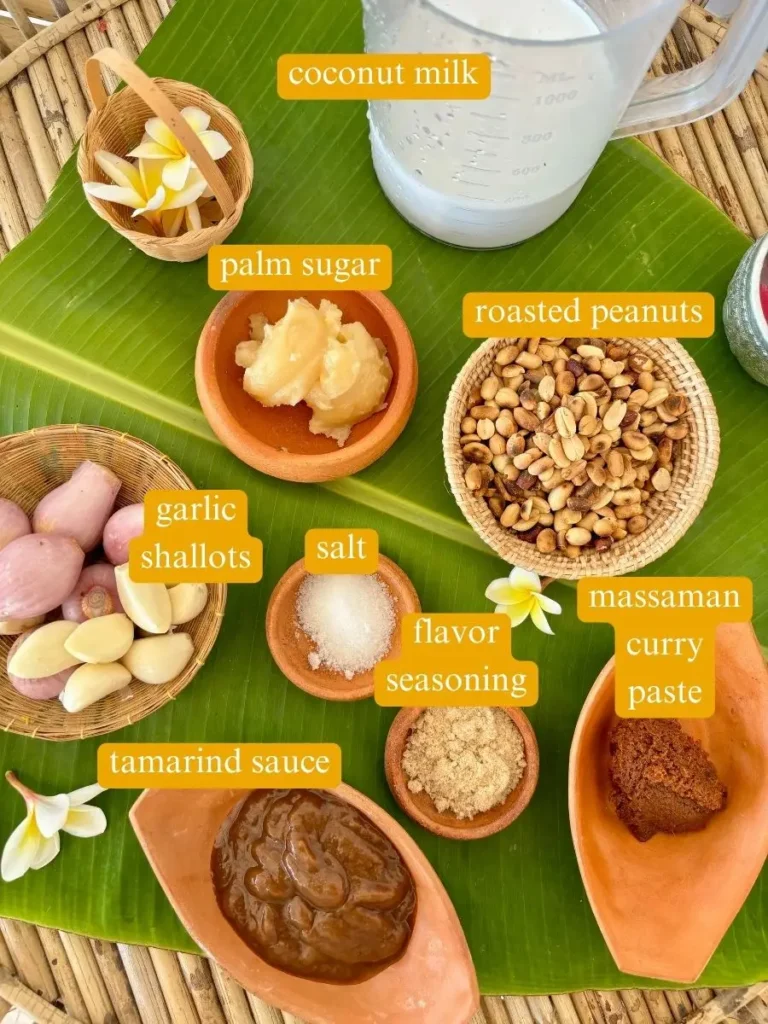
- Massaman curry paste – Use my recipe for massaman curry paste or get it at Asian grocery stores or Asian markets. Some key ingredients are star anise, cinnamon, and lemongrass.
- Dry roasted peanuts – Dry roasted peanuts gives the dipping sauce a wonderful fragrance and smoky note.
- Coconut milk – Use full-fat coconut milk for a creamy, velvety texture. My go-to brand is Aroy-D, we used this brand in our former Thai restaurant.
- Palm sugar – Adds a caramel-like sweetness that’s different from white and brown sugar.
- Rosdee seasoning powder – This is a popular Thai seasoning powder that’s used as a flavor enhancer; it can be used in soups, stir-fries, and this peanut sauce.
- Tamarind paste – Adds a slightly sweet, sour to a tangy flavor.
- Shallots – They add a natural sweetness with a mild onion flavor.
- Garlic
- Salt
Cooking instructions

Step 1: Begin by dry roasting the peanuts to a golden hue, then lightly crush them with a mortar and pestle.

Step 2: Use a blender or food processor to mix the garlic and shallots into a smooth mixture.
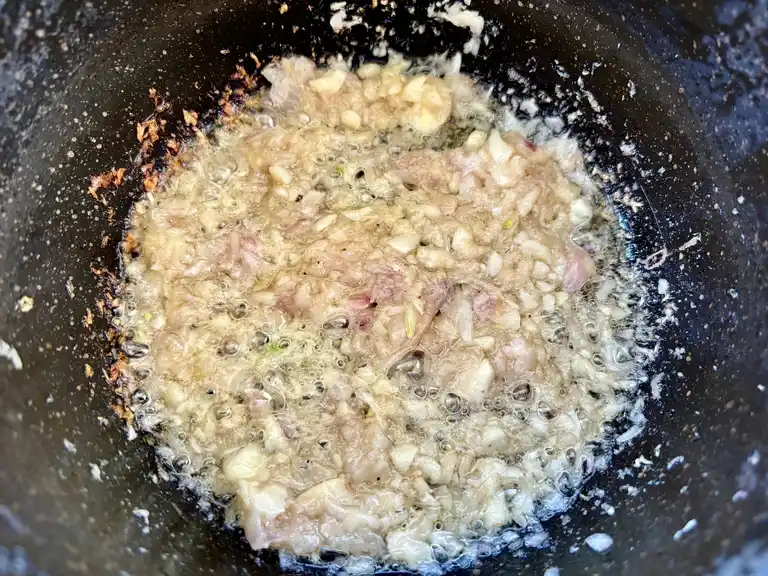
Step 3: Warm a saucepan over a medium heat and add oil. Sauté the puréed garlic and shallots until they’re fragrant.

Step 4: Add the massaman curry paste and let it sizzle for about 2 minutes, stirring frequently.
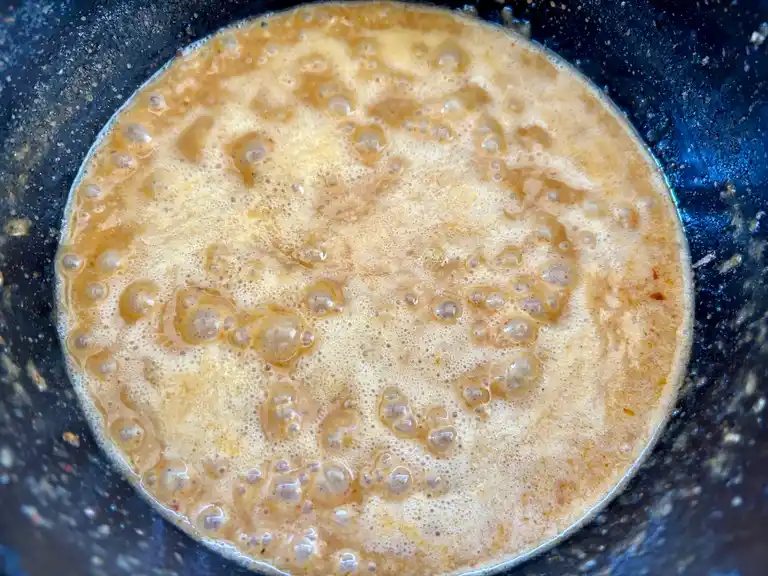
Step 5: Pour in the coconut milk, add rosdee seasoning powder, tamarind paste, palm sugar, and salt. Simmer until the sugar has fully melted and the sauce bubbles up again.
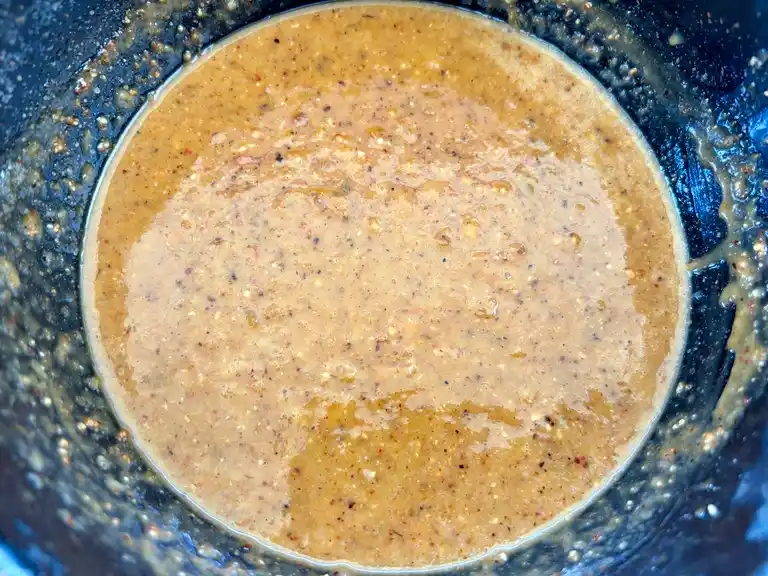
Step 6: Finally, sprinkle in the crushed peanuts, give the sauce a final stir, and allow it to thicken slightly before taking it off the heat. Enjoy!
Kitchenware
- Saucepan with a stirring tool
- Measuring spoons and cups
- Food processor or blender
- Thai mortar and pestle
Thai satay sauce serving suggestions
This Thai peanut sauce is versatile and is not just for satay. Its nutty and sweet flavors pair well with many Thai food.
You can serve it as a dipping sauce with fresh spring rolls, raw vegetables like cucumbers and carrots, or satay skewers like moo ping or beef satay.
Or you can use it as a salad dressing for a simple cabbage slaw or a Thai-style salad like a cold noodle salad.
If you’re having grilled meat like Thai chicken wings or moo yang, you should definitely pair it with this nutty sauce. You can also add a spoonful of it to your stir-fries, like this Thai vegetables stir-fry. The options are endless!
Storing and reheating tips
Storing: You can keep any leftover sauce fresh by storing it in an airtight container, like a mason jar, in the refrigerator. It will stay good for up to a week.
Making ahead: Since this sauce stores well in the fridge, it’s the perfect prep ahead sauce.
Reheating: After storing it in the fridge, the sauce will thicken slightly. Gently reheat it on the stove over low heat, and it will be ready to serve again.
Frequently asked questions
What does Thai peanut sauce taste like?
Thai peanut sauce is creamy and rich, with a sweet and nutty flavor. It can have a very mild spice and a complex taste from the combination of peanuts, coconut milk, and spices.
What to make with Thai peanut sauce?
You can use Thai peanut sauce in various dishes. It’s great as a dipping sauce for vegetables or Thai chicken satay, drizzled over salads, with peanut noodles, or with any type of grilled meat.
Is Thai peanut sauce spicy?
Thai peanut sauce can have a bit of spice, but it’s generally mild. The level of spiciness can vary depending on the recipe, especially with the type and amount of curry paste used.
What is in Thai peanut sauce?
Authentic Thai peanut sauce typically includes peanuts, coconut milk, curry paste, and a sweetener like palm sugar.
Is this recipe gluten-free?
Yes, this Thai peanut sauce is gluten-free. However, always double-check your store-bought ingredients.
Authentic Thai dipping sauce recipes
- Thai sweet chili sauce
- Thai green chili sauce
- Nam jim seafood
- Thai hot sauce
- Nam jim jaew
- Prik nam pla
Loved reading this authentic Thai peanut sauce recipe? Please make my day by dropping a star rating and/or a comment below! Follow me on Facebook, Instagram, and Pinterest.
Authentic Thai Peanut Sauce Recipe (Nam Jim Satay)

Ingredients
- 2/3 cup roasted peanuts
- 1 head garlic
- 2/3 cup shallots, chopped
- 5 tbsp oil
- 2 tbsp massaman curry paste, see notes
- 1 1/4 cups coconut milk
- 1 tbsp rosdee seasoning powder, see notes
- 2 tbsp tamarind sauce
- 2 1/2 tbsp palm sugar
- 1/2 tbsp salt
Instructions
- Begin by dry roasting the peanuts to a golden hue, then lightly crush them with a mortar and pestle.
- Use a blender or food processor to mix the garlic and shallots into a smooth mixture.
- Warm a saucepan over a medium heat and add oil. Sauté the puréed garlic and shallots until they’re fragrant.
- Add the massaman curry paste and let it sizzle for about 2 minutes, stirring frequently.
- Pour in the coconut milk, add rosdee seasoning powder, tamarind paste, palm sugar, and salt. Simmer until the sugar has fully melted and the sauce bubbles up again.
- Finally, sprinkle in the crushed peanuts, give the sauce a final stir, and allow it to thicken slightly before taking it off the heat. Enjoy!
Notes
- Use the nutrition card in this recipe as a guideline.
- Rosdee seasoning powder - Rosdee is a Thai flavor enhancer, often used in Thai cuisine to enhance the overall flavors. It's available at any Asian grocery store or market.
- Massaman curry paste - Use my recipe for massaman curry paste or get it at Asian grocery stores or Asian markets. Some key ingredients are star anise, cinnamon, and lemongrass.




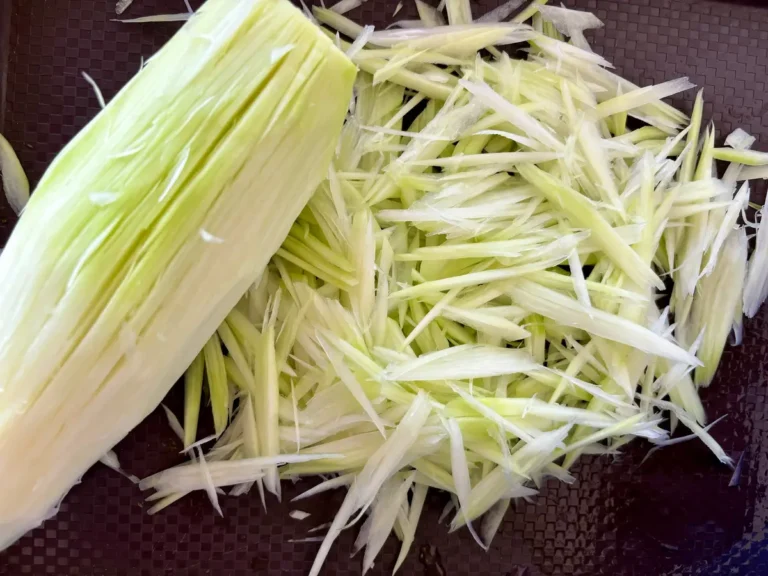
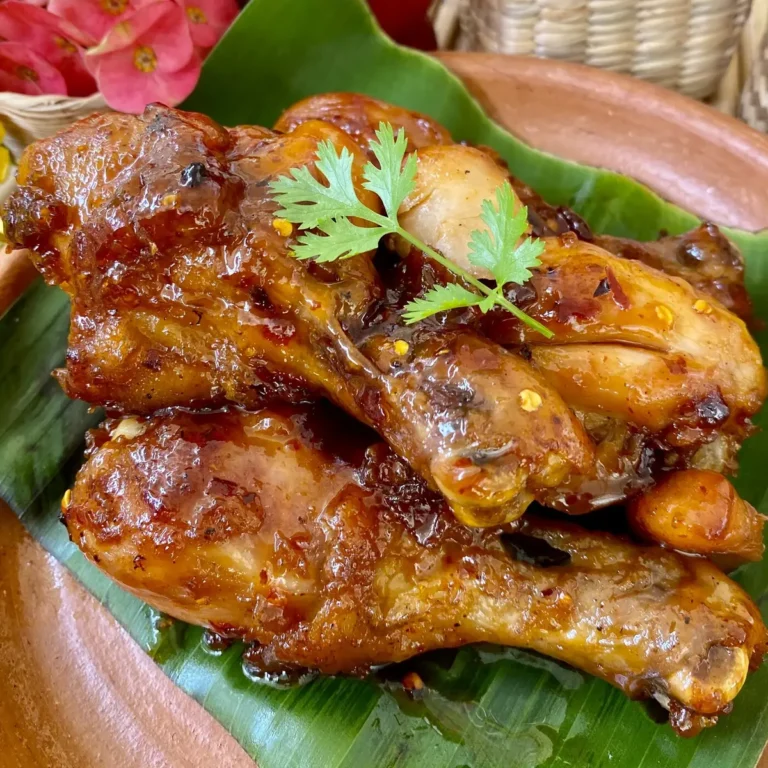

What can I use instead of Rosdee? I am allergic to msg.
Hey Deborah! If you’re avoiding MSG, you can look for MSG-free bouillon brands. I believe Knorr has one! Rosdee is basically a chicken (or pork) bouillon just like Knorr.